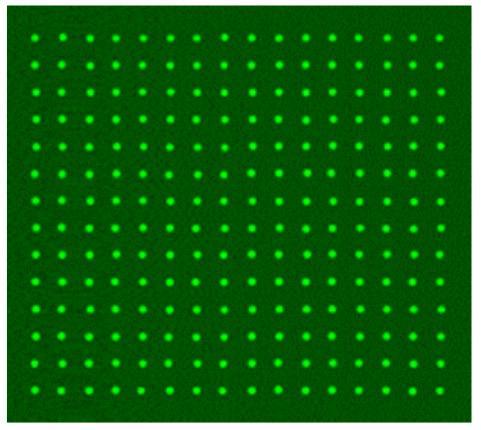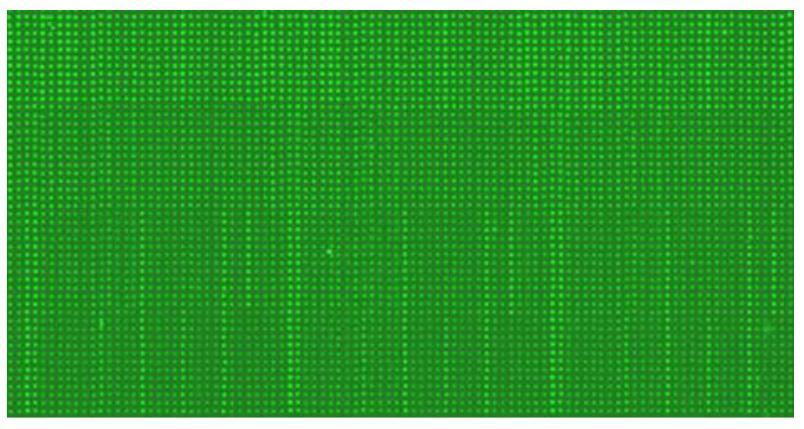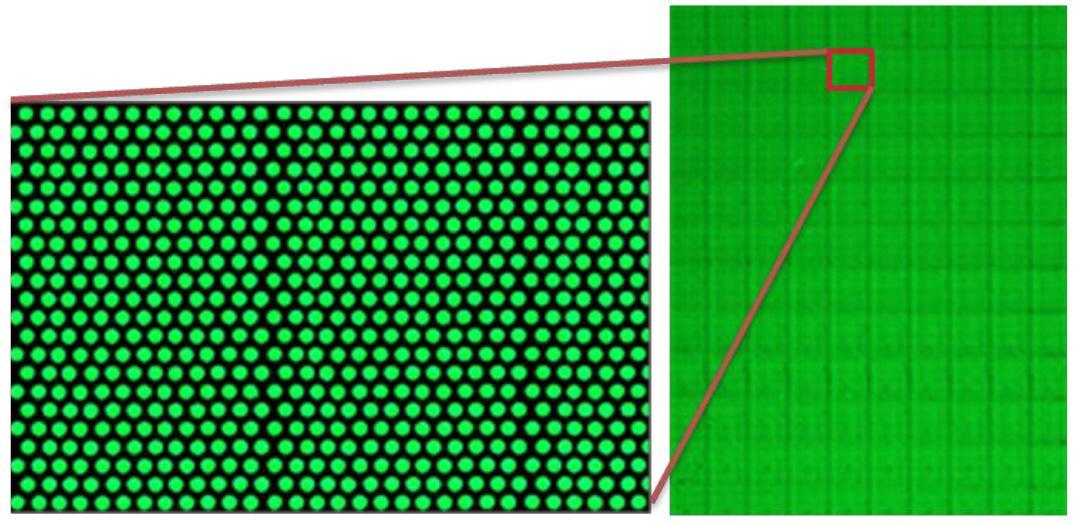The challenge
CDI Laboratories, a US-based proteomics company, was experiencing frequent production delays, loss of yield, batch inconsistency and sample waste with their low-throughput contact pin-printing system. Consequently, they lacked the efficiency to produce large quantities of high-quality protein arrays. With growing demand, the customer faced considerable pressure to reliably commercialise their product and reduce exponentially increasing maintenance costs.

Arrayjet Advance™ Services
The CDI project was supported by Arrayjet Advance™ custom printing services, launched in 2011. This end-to-end CRO microarray service allowed the customer to access over 75 years’ combined microarray experience at Arrayjet HQ with the aim of successful optimisation, technology transfer and commercialisation of their protein array.
Assay Optimisation
A small subset of proteins from CDI’s human protein library was printed onto epoxysilane (Figure 2) and nitrocellulose surfaces using Arrayjet’s Ultra Marathon II microarrayer and JetMosphere Max™ environmental control set to 4°C. Various test volumes were dispensed and the optimum deposition volume was determined. A total of 14 identical miniarrays were printed with a spot circularity of >99% attained. When the miniarrays were assayed and analysed, the expected expression pattern was observed.

Batch Printing
A larger subset of protein samples from CDI’s human protein library was then spotted onto 200 epoxysilane and nitrocellulose slides to further analyse spot reproducibility, circularity and morphology (Figure 3). Arrayjet’s Jetguard™ ensured minimal sample evaporation during the longer print run.

High density printing
Following confirmation of functional protein assays, a successful transfer from pin-spotting to Arrayjet’s inkjet technology was confirmed. The next step involved evaluation of the high-density printing capabilities of the Ultra Marathon II microarrayer. Samples from the CDI’s human protein library were printed in a hexagonal array at high density to evaluate inter- and intra-slide reproducibility on a variety of substrates, whilst ensuring low background. The resulting slides showed no merging and consistent spot alignment.
Printing the Full Human Protein Library
A complete set of over 19,000 GST fusion proteins was purified from CDI’s human protein library and printed in duplicate across 500 slides at a sample deposition volume of 200 pL (Figure 4).
As per the agreed success criteria:
- >97% of spots were present on all slides
- Spot circularity was >90%
- Inter- and intra-slide Coefficient of Variability
- (CV) values were <20%
- Functional analysis validated results as positive and accurate

Conclusion
Following successful technology transfer, CDI Laboratories now produces the largest human proteome microarray in the world, printing their HuProtTM Version 3.1 arrays across 1000 slides in a single batch. Purchase of the Arrayjet Ultra Marathon II has enabled CDI Laboratories to print proteome and custom microarrays that can efficiently analyse thousands of protein interactions in-house, using minimal volumes of valuable clinical samples.
The Arrayjet Advance™ service and non-contact piezoelectric technology has significantly increased the production efficiency for printing large, high quality batches of protein microarrays. The environmental control unit not only sustains excellent spot morphology and array alignment, but also retains the native conformation of proteins with utmost precision, ensuring consistent assays.
“CDI Laboratories purchased an Arrayjet Ultra Marathon II to print microarrays for our HuProt™ product line, and to print focused arrays with smaller subsets of proteins for discovery and hybridoma projects. CDI is planning to print monoclonal antibody arrays and membrane protein arrays with the new technology in the near future. We chose Arrayjet’s technology as we needed to quintuple our capacity, preferably with one instrument, and Arrayjet’s high-tech, precise and user-friendly capabilities were an obvious benefit. One of the added advantages of Arrayjet’s company structure is that it provides in-house printing through Arrayjet Advance. We were able to carry out several studies over several months to reaffirm our belief that the technology would improve many facets of our operation.”
Dr. Ignacio Pino, CEO, CDI Laboratories
“Arrayjet’s Jetspyder™ sample aspiration device effectively eliminates any cross-contamination between protein samples, so the quality of our microarrays has significantly improved. Previously, we could only produce 150 slides of acceptable quality in a print run, which is too slow a pace for the scale and growth of current and future demand. Being able to quickly print up to 1000 slides in a highly efficient manner was incredibly appealing to us.”
Dr. Heng Zhu, Professor, Johns Hopkins School of Medicine


